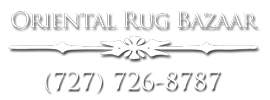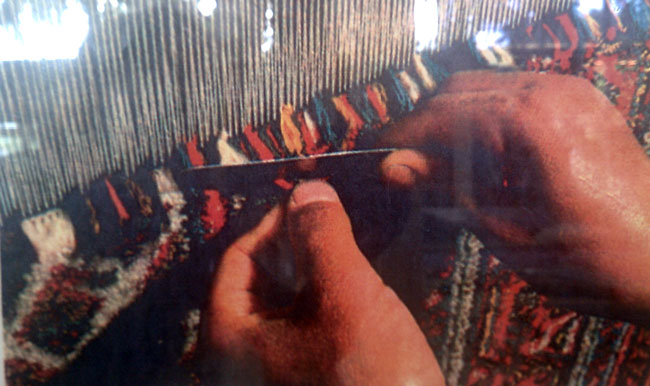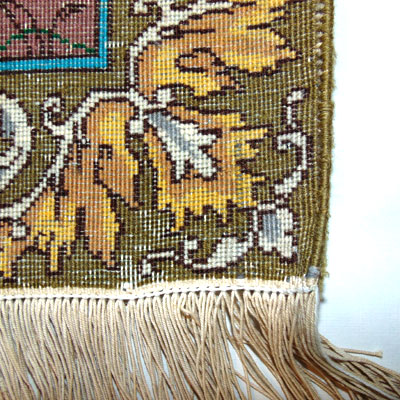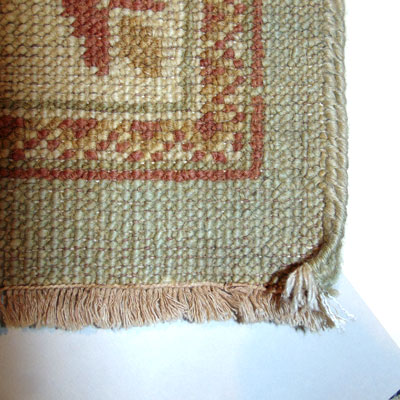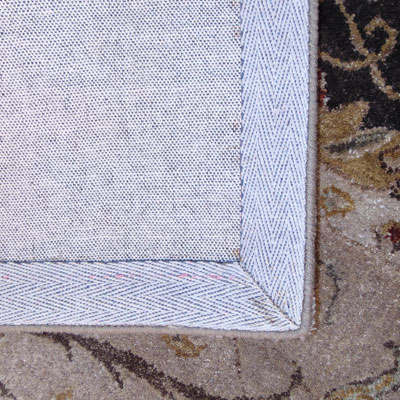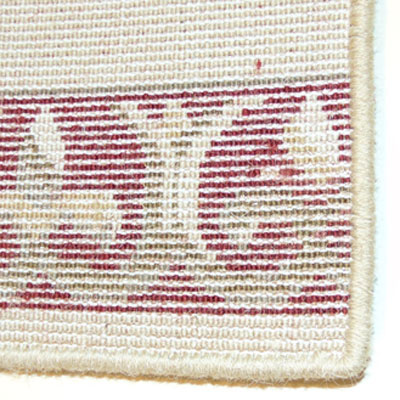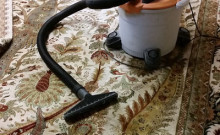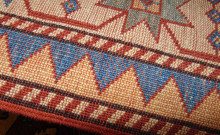What makes handmade rugs so practical and great is that they are works of art that endure heavy everyday use. Let’s say you’ve decided to purchase a handmade rug, but how do you know if the rug you are considering is really handmade? How can you tell the difference? If you are already an owner of handmade rugs, chances are you already know this, but besides relying on the expertise of a reputable dealer – like us here at Oriental Rug Bazaar 🙂 – it’s good to familiarize yourself with the 3 most common types of area rugs that you may come across while shopping. We’re going to focus on the visual differences that are easy to identify.
Hand-knotted Rugs
The first thing I do when checking out a rug is to look at the backside. With a hand-knotted rug, you will see the exact design on the back, sans the pile of course. If the rug has fringes, you will notice that they aren’t just sewn or glued to the edge of the rug – but that each strand of fringe is running through the entire length of the rug and coming out the other end. Fringes in hand-knotted rugs are really the “skeleton” or loom or foundation of the rug. Each knot is woven around two or more strands of the fringes. Generally, the smaller the knots, the finer the rug. You will notice that the knotting and workmanship doesn’t look 100% perfect like a “machine” job, but will have the natural variations and imperfections of a hand made artwork.
Think of how the number of pixels define the quality of a graphic image, or the resolution of a high definition TV. A finer rug with lots of small, fine knots takes a lot longer to weave than a coarser rug with bigger knots and less knots per square inch. Now, having said that, some rugs, like tribal rugs, Peshawar rugs, vintage-look rugs, or distressed rugs meant to look old, by character have larger knots. It doesn’t make them “inferior”, but it shouldn’t cost as much as a same-sized rug that has triple the knots per square inch.
Hand-tufted Rugs
Hand-tufted rugs are easily identified by the canvas or fabric backing on the back side. You can’t see the pattern on the back side. They typically don’t have fringes, and if they do, they are attached or glued to the ends and are not the “foundation” of the rug, as in hand-knotted rugs. Tufted rugs are still wool pile and are great alternative to hand-knotted rugs WHEN you want a less expensive option. Keep in mind, hand-tufted rugs don’t appreciate in value like many hand-knotted rugs, and cannot be soaked or deep cleaned like knotted rugs, but rather need to be professionally surface washed.
Machine-made rugs
These rugs are usually made from synthetic materials, although some of the higher-end machine made rugs are from 100% wool pile. You can see the pattern on the back, but it is almost too perfect with no variations in knot size and have a similar texture to the back of a wall to wall carpet. Machine-made rugs usually have no fringes, and if they do, they are always sewn or glued to the edges of the rug and do not run through the rug.
Being familiar with the product you are purchasing is always a good idea, but always try to deal with a reputable, experienced dealer or business to ensure that you are getting at least what you’re paying for. At Oriental Rug Bazaar, we carry mainly hand-knotted rugs and area rugs in Clearwater FL, with a large selection of hand-tufted rugs as well, and even a decent selection of machine-made rugs. You can contact us or visit our showroom anytime and we’ll be happy to further educate you on rugs and the different types that we carry.
